S-10: Difference between revisions
Pbcjohnston (talk | contribs) (Created S-10 page) |
Pbcjohnston (talk | contribs) (Added new photo) |
||
| (2 intermediate revisions by the same user not shown) | |||
| Line 1: | Line 1: | ||
[[File:S-Boat Header 1.jpg]] | [[File:S-Boat Header 1.jpg]] | ||
<div style="text-align: justify;"><span style="color:#00008B"> | [[File:S-10 launch 1.jpg|left|500px]] | ||
<div style="text-align: justify;"><span style="color:#00008B">S-10 shortly after her launch from the Portsmouth Navy Yard, Kittery, ME., December 9, 1920. As is traditional for the day, the boat is made up with signal flags rigged fore and aft. She is sitting high in the water as much work still needs to be done. 19 months of work remained before her commissioning on September 22, 1922. More than anything else, this was reflective of the slowing of the construction process brought on by the loss of urgency at the end of WWI. | |||
<small>Milne Special Collections, University of New Hampshire Library, Durham, N.H.</small> | |||
[[File:Red bar sub new.jpg]] | |||
[[File:S-10 launch 2.jpg|left|500px]] | |||
<div style="text-align: justify;"><span style="color:#00008B">The launch of S-10 on December 9, 1920 from a different angle. December in Maine can be quite cold indeed. It was not uncommon to see chunks of ice in the Piscataqua River. There was a stiff breeze blowing that day as evidenced by the fluttering of the signal flags. | |||
Of note here is the lack of the bow plane slit in the forward superstructure. The [[S-3 through S-9|S-8 bow plane modification]] that moved the blow planes below the waterline had proven entirely successful so it was repeated on the S-10 group. | |||
<small>Milne Special Collections, University of New Hampshire Library, Durham, N.H.</small> | |||
[[File:Red bar sub new.jpg]] | |||
[[File:S-10 ice 1.jpg|left|500px]] | |||
<div style="text-align: justify;"><span style="color:#00008B">S-10 shown alongside the pier at Portsmouth Navy Yard, January 24, 1925. She had just made a run from New London, CT. north up the New England coast, accumulating a coating of ice along the way. This can actually become a dangerous situation, as ice buildup adds weight topside and reduces stability. There is a rather cheeky phrase hand written at the bottom of the photo, "It's a great life if you don't weaken". It is a testament to the lifestyle of a Pigboat sailor! | |||
<small>U.S. Navy photo.</small> | |||
[[File:Red bar sub new.jpg]] | |||
[[File:S-10 ice 2.jpg|left|500px]] | |||
<div style="text-align: justify;"><span style="color:#00008B">A closeup of the ice laden bow of S-10. It is quite thick here, heavily draping the topside rigging. Note in the left center of the photo there are words painted on the superstructure near the waterline that read, "Bow Plane Keep Clear". This is a warning to tugs and small craft that the starboard side bow plane is directly underneath and out of view, and to stay either forward or aft of that point. The anchor is a standard Navy stockless type. It is supplemented by a second anchor, a mushroom type, that is housed on the keel between the torpedo tubes. | |||
<small>U.S. Navy photo.</small> | |||
[[File:Red bar sub new.jpg]] | |||
[[File:S-10 ice 3.jpg|left|500px]] | |||
<div style="text-align: justify;"><span style="color:#00008B">A closeup of the S-10 ice photo, showing the deck gun and conning tower fairwater. Submerging would have gotten rid of the ice, but this is actually a fairly dangerous thing to do, as the boat would become unstable as it dove with all of the additional weight topside. A great deal of care in trimming the boat would have been necessary. Curiously, the raised radio mast and attached signal halyards seem to be ice free. | |||
<small>U.S. Navy photo.</small> | |||
[[File:Red bar sub new.jpg]] | |||
[[File:S-10 with ASR.jpg|left|500px]] | |||
A fine photo of S-10 alongside the pier at an unknown location, mid to late 1920's. This is possibly shortly after her commissioning at Submarine Base New London, CT. A Lapwing-class minesweeper/submarine rescue vessel is moored across the pier from her. | |||
<small>Photo in the private collection of Ric Hedman.</small> | |||
[[File:Red bar sub new.jpg]] | |||
[[File:S-10 starboard.jpg|left|500px]] | |||
<div style="text-align: justify;"><span style="color:#00008B">S-10 most likely at anchor on very still day. The crew is relaxing around the deck gun and laundry is drying from the radio antenna aft. Date and location is unknown, but is circa 1925. | |||
<small>Photo in the private collection of Ric Hedman.</small> | |||
[[File:Red bar sub new.jpg]] | |||
[[File:S-10 near pier.jpg|left|500px]] | |||
<div style="text-align: justify;"><span style="color:#00008B"> S-10 and [[S-20|'''S-20 (SS-125)''']] warping out from the seawall at Submarine Base New London, approximately 1928 or 1929. [[O-3|'''O-3 (SS-63)''']], [[O-4|'''O-4 (SS-64)''']], and [[O-1|'''O-1 (SS-62)''']] are at the finger piers in background. The O-3's conning tower fairwater is just above the fairwater of S-10. | |||
<small>Photo in the private collection of Ric Hedman.</small> | <small>Photo in the private collection of Ric Hedman.</small> | ||
[[File:Red bar sub new.jpg]] | |||
[[File:S-10 late 1920s.jpg|left|500px]] | |||
This is a fine photo of S-10 taken in the late 1920's, likely somewhere in the Panama Canal area, her homeport for many years. Note that by the time of this photo, the ready service ammunition locker at the forward edge of the conning tower fairwater (below the bridge) has been removed. This was a common modification for the Government design S-boats in this period. Why this was done is not entirely clear, but it may have had to do with corrosion control problems. S-10 was decommissioned and scrapped in 1936 mostly due to severe corrosion and rusting in her aft hull. Her sisters S-11, S-12, and S-13 were all retained for WWII service, so apparently S-10 suffered from this problem much worse than the others. | |||
<small>Photo in the private collection of Dave Johnston.</small> | |||
[[File:Red bar sub new.jpg]] | [[File:Red bar sub new.jpg]] | ||
Latest revision as of 09:22, 14 October 2024
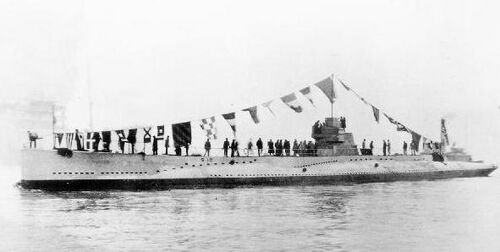
Milne Special Collections, University of New Hampshire Library, Durham, N.H.

Of note here is the lack of the bow plane slit in the forward superstructure. The S-8 bow plane modification that moved the blow planes below the waterline had proven entirely successful so it was repeated on the S-10 group.
Milne Special Collections, University of New Hampshire Library, Durham, N.H.
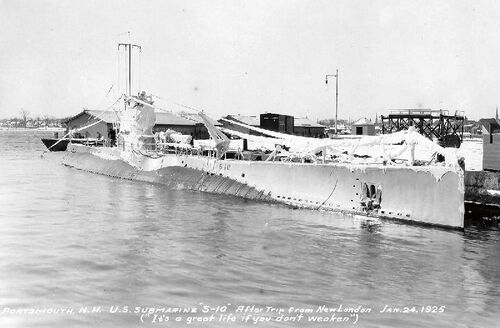
U.S. Navy photo.
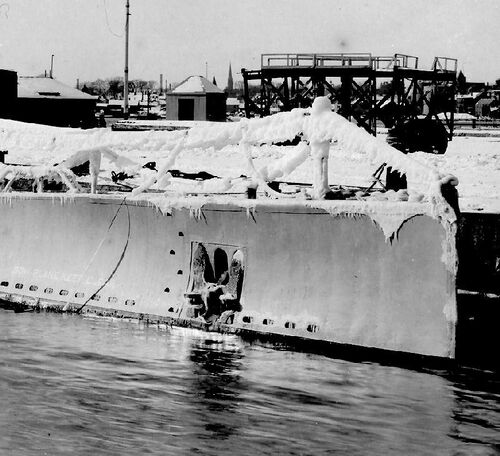
U.S. Navy photo.
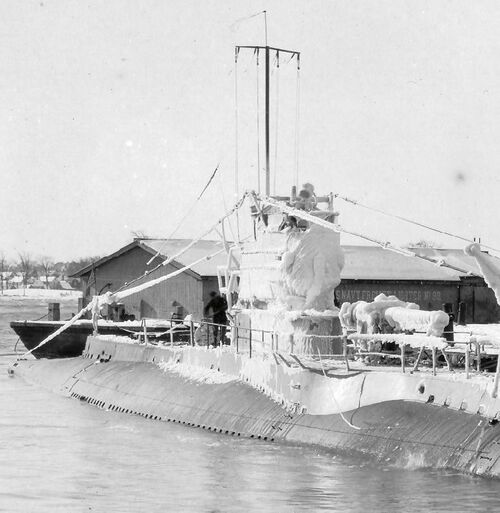
U.S. Navy photo.
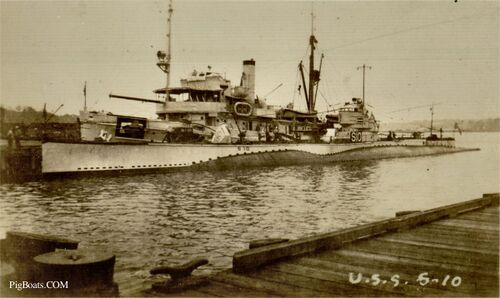
A fine photo of S-10 alongside the pier at an unknown location, mid to late 1920's. This is possibly shortly after her commissioning at Submarine Base New London, CT. A Lapwing-class minesweeper/submarine rescue vessel is moored across the pier from her.
Photo in the private collection of Ric Hedman.
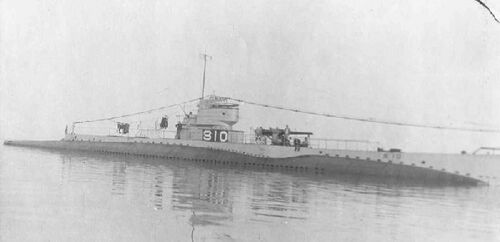
Photo in the private collection of Ric Hedman.
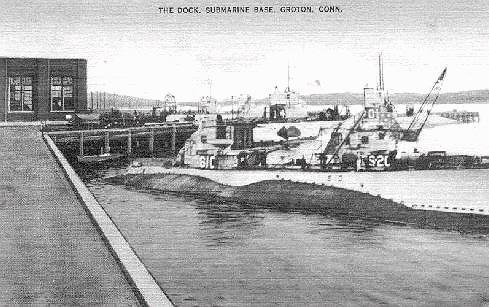
Photo in the private collection of Ric Hedman.
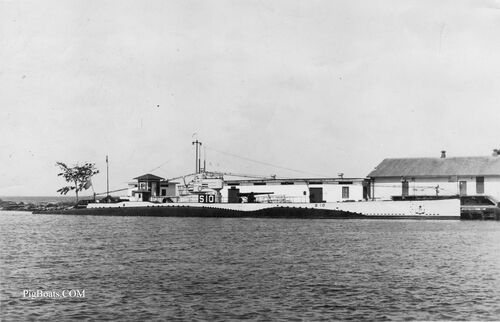
This is a fine photo of S-10 taken in the late 1920's, likely somewhere in the Panama Canal area, her homeport for many years. Note that by the time of this photo, the ready service ammunition locker at the forward edge of the conning tower fairwater (below the bridge) has been removed. This was a common modification for the Government design S-boats in this period. Why this was done is not entirely clear, but it may have had to do with corrosion control problems. S-10 was decommissioned and scrapped in 1936 mostly due to severe corrosion and rusting in her aft hull. Her sisters S-11, S-12, and S-13 were all retained for WWII service, so apparently S-10 suffered from this problem much worse than the others.
Photo in the private collection of Dave Johnston.
Page created by:
Ric Hedman & David Johnston
1999 - 2023 - PigBoats.COM©
Mountlake Terrace, WA, Norfolk, VA
webmaster at pigboats dot com
